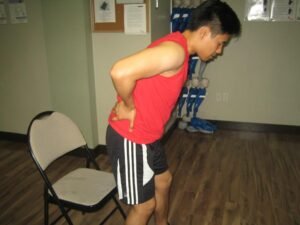The source of the sharp shooting hip pain can either be localized or connected to the low back. It is important to note that a diagnosis can be difficult since there are pathologic conditions that range from benign tendon or muscle strain or a severe femoralneck stress fracture that have similar symptoms. You can learn how to manage the pain if you will register for first aid training today.
Muscle strains
There are large muscles groups that start in the hip and extend up to the knee. Once a thigh muscle endures a strain such as a harsh tear or bruise in which the distribution of pain manifests in the joint and along the affected muscle. A good example is a torn hamstring which is considered as a prevalent sports-related injury.
Piriformis syndrome

This syndrome develops once the piriformis muscle which is positioned at the rear of the hip squeezes the sciatic nerve. The condition can cause severe pain in both the joint and along the track of the sciatic nerve at the rear part of the leg.
In some circumstances, the pain can radiate up to the calf and even the foot. Take note that the syndrome is considered uncommon and can be difficult to differentiate from almost similar symptoms caused by the compression of the sciatic nerve at its source in the spinal cord.
Fractures
It is important to note that fractures on the hip tend to occur on the upper quarter of the thighbone where it connects with the pelvis. The outcome is intense hip pain over the joint that radiates to the upper part of the thigh.
Hip fractures that are caused by falls and conditions such as osteoporosis can occur frequently among the elderly. In most cases, the outcomes can be devastating for this age group where many never fully recovery from the injury.
Bursitis
The inflammation of the trochanteric bursa can result to hip pain that radiates into the thigh. Any action that increases pressure on the bursa such as walking or lying on the affected hip can aggravate the pain. Bursitis can affect individuals of all ages but more common among women, elderly and middle-aged men.
Osteoarthritis
The deterioration of the cartilage and bony alterations that occur during osteoarthritis are typically due to the wear and tear of the aging joint. The weight-bearing joints such as the hips are susceptible. In the advanced stages, the degeneration can lead to debilitating hip pain.
Osteonecrosis
The joint that is at risk for osteonecrosis is the hip. Once the supply of blood to the ball of the joint is damaged due to dislocation or fracture, the bone cells eventually die. The leg and hip pain can become incapacitating as the weakening of the bone continues. In the advanced stages of osteoarthritis, osteonecrosis would require hip replacement surgery.
